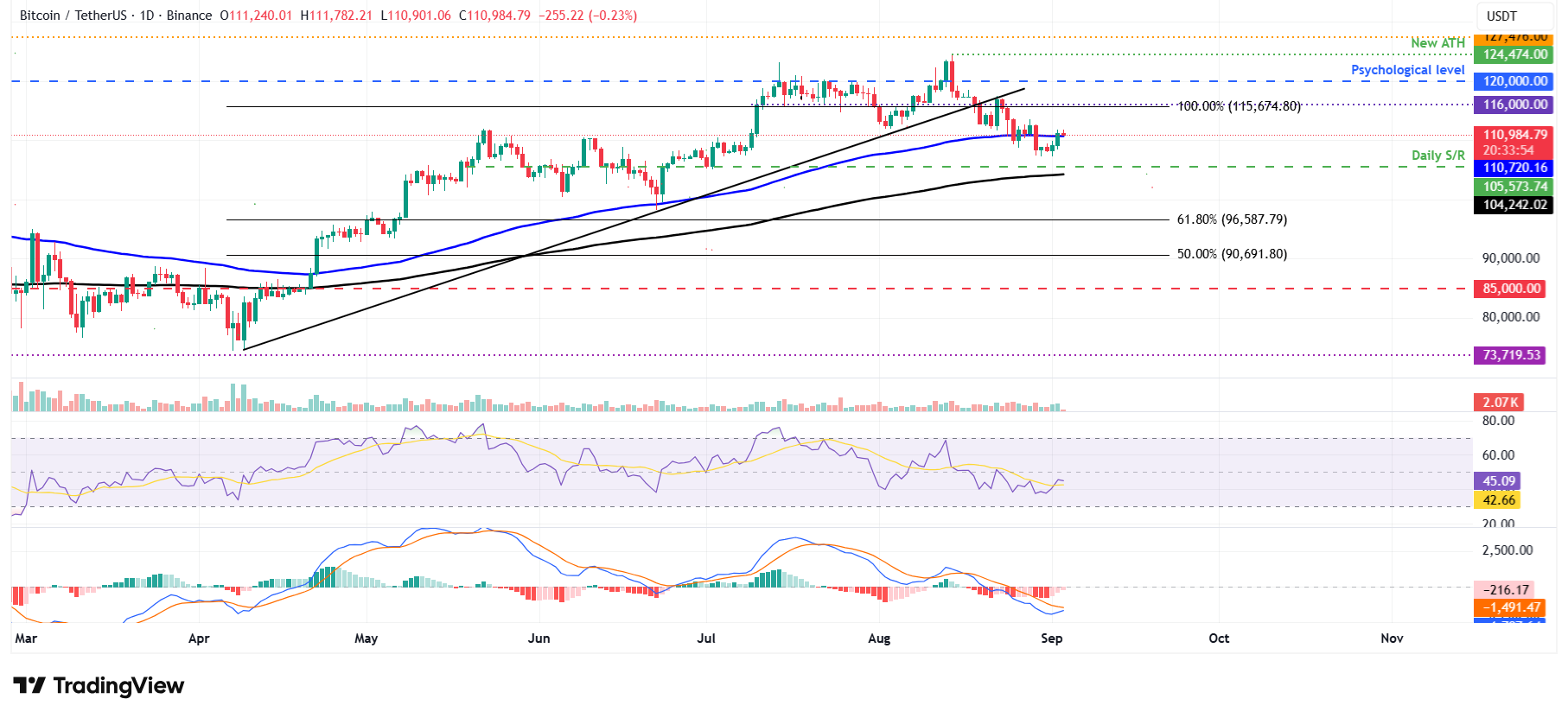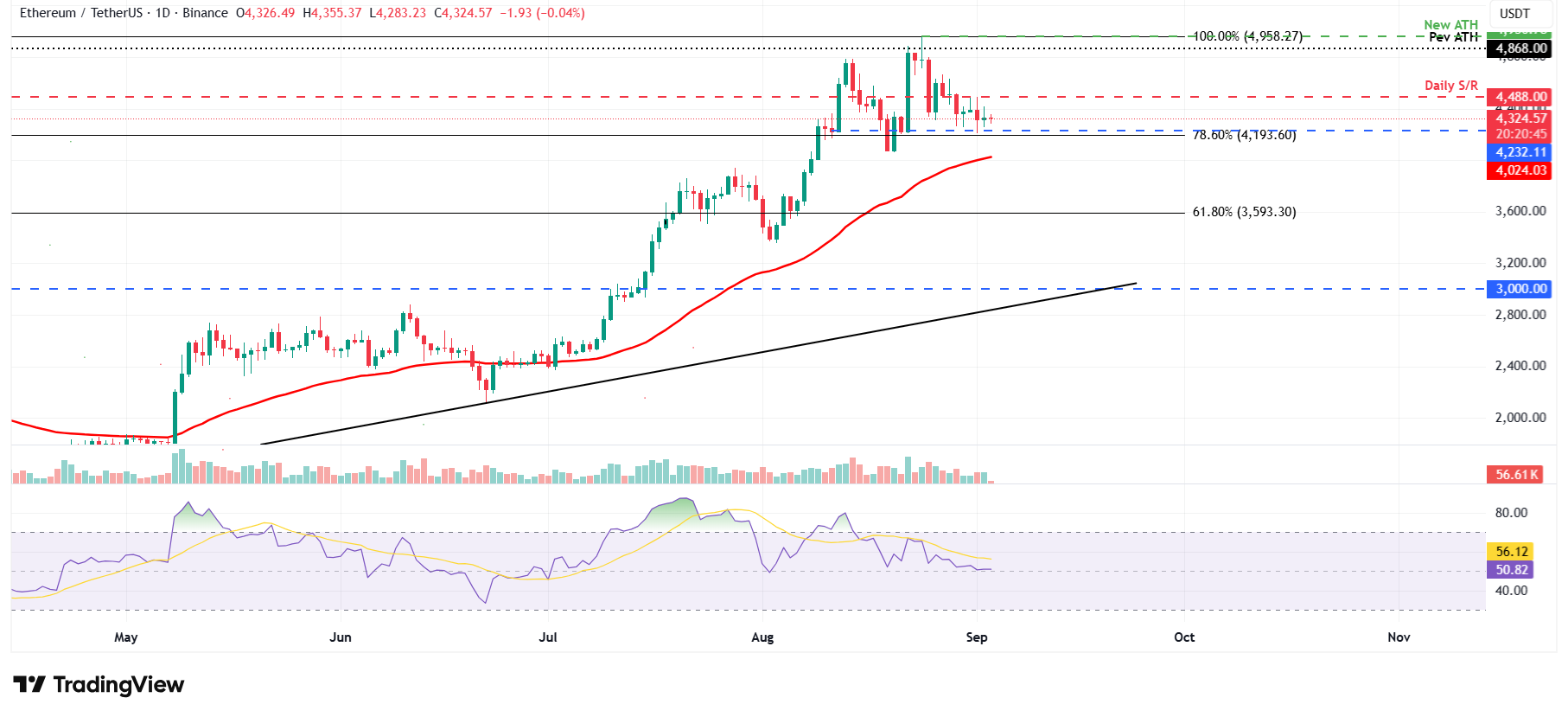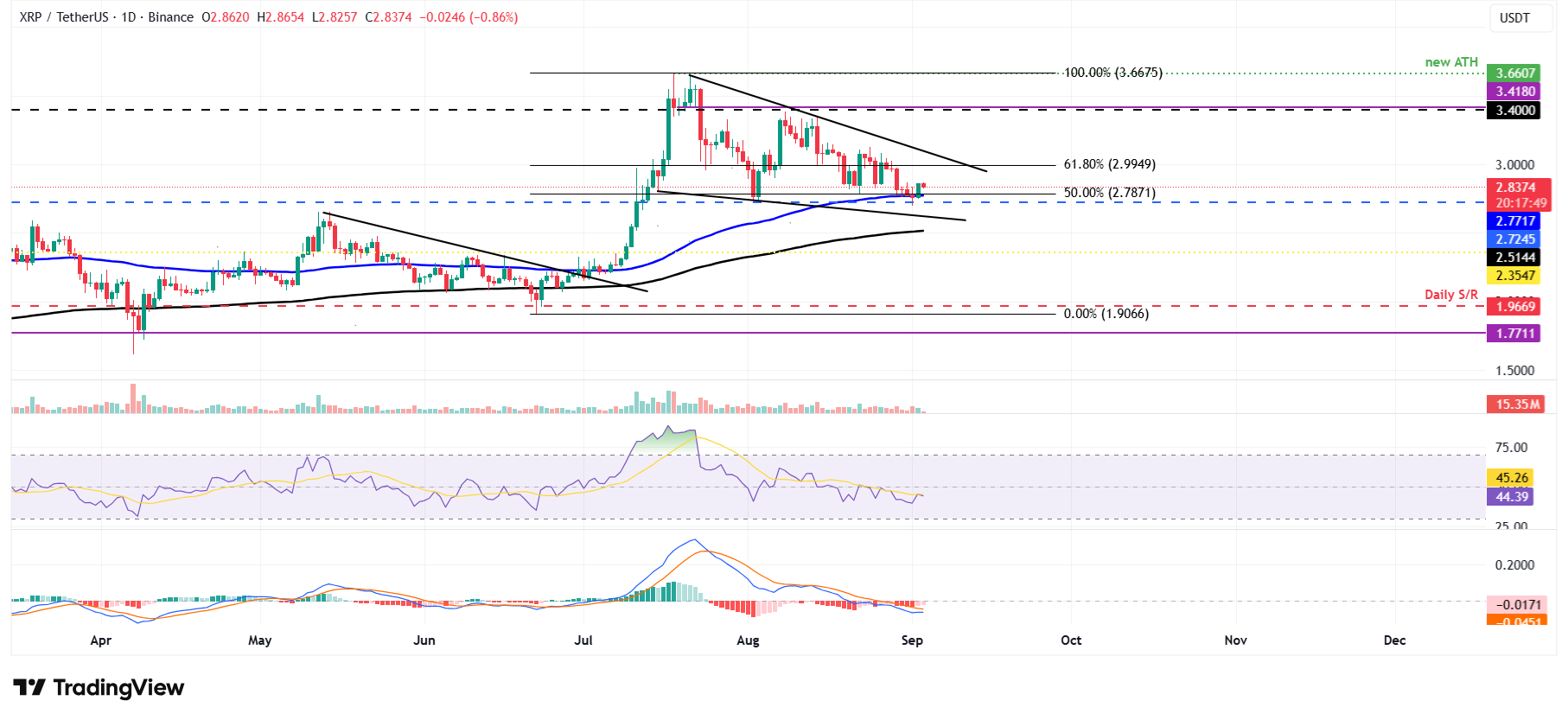Top 3 Price Prediction: Bitcoin, Ethereum, Ripple – BTC, ETH, and XRP recover as market sentiment steadies
- Bitcoin price extends its recovery on Wednesday, having gained nearly 3% so far this week.
- Ethereum price holds above its daily support at $4,232, eyeing a potential recovery ahead.
- Ripple’s XRP rebounds after finding support near $2.72 earlier this week, signaling improving short-term momentum.
Bitcoin (BTC) price is extending its recovery, trading above $110,000 at the time of writing on Wednesday, following recent corrections. Ethereum (ETH) and Ripple (XRP) followed BTC's footsteps and recovered slightly after retesting their key support levels, hinting at a possible continuation of the rebound if momentum holds.
Bitcoin closes above 100-day EMA, aiming for further recovery
Bitcoin price started the week on a positive note, recovering slightly on Monday after a nearly 5% correction the previous week. BTC closed above the 100-day Exponential Moving Average (EMA) at $110,720 on Tuesday. At the time of writing on Wednesday, it hovers at around $110,900.
If BTC continues its recovery, it could extend the rally toward its daily resistance at $116,000.
The Relative Strength Index (RSI) on the daily chart reads 45, approaching its neutral level of 50, which indicates a fading of bearish momentum. The Moving Average Convergence Divergence (MACD) lines are also nearing each other with a decreasing red histogram bars indicating a fading of bearish momentum.

BTC/USDT daily chart
However, if BTC faces a correction, it could extend the decline toward its daily support level at $105,573.
Ethereum could recover if daily support holds
Ethereum price retested and found support around the daily level of $4,232 on Saturday, and recovered slightly the next day. However, it was rejected from its daily level at $4,488 on Monday and retested the $4,232 support again, recovering slightly the next day. At the time of writing on Wednesday, it hovers at around $4,328.
If the daily level at $4,232 continues to hold as support, ETH could extend the recovery toward its next daily resistance at $4,488. A successful close above this level could extend the gains toward its record high at $4,956.
The RSI on the daily chart reads 50 and is flattening around its neutral level of 50, indicating indecisiveness among traders.

ETH/USDT daily chart
However, if ETH faces a correction and closes below the daily support at $4,232, it could extend the decline to retest its 50-day EMA at $4,024.
XRP recovers as it finds support around $2.72
XRP price found support around its daily level at $2.72 on Monday and recovered 3.74% the next day. At the time of writing on Wednesday, it hovers at around $2.83.
If the daily level at $2.72 continues to hold, XRP could extend its recovery toward its 61.8% Fibonacci retracement level at $2.99.
Like Bitcoin, XRP’s RSI reads 44, pointing upward and nearing its neutral level of 50, indicating fading bearish momentum. For the recovery rally to be sustained, the RSI must move above the neutral level.

XRP/USDT daily chart
However, if XRP closes below $2.72, it could extend the decline toward its 200-day EMA at $2.51.
Cryptocurrency metrics FAQs
The developer or creator of each cryptocurrency decides on the total number of tokens that can be minted or issued. Only a certain number of these assets can be minted by mining, staking or other mechanisms. This is defined by the algorithm of the underlying blockchain technology. On the other hand, circulating supply can also be decreased via actions such as burning tokens, or mistakenly sending assets to addresses of other incompatible blockchains.
Market capitalization is the result of multiplying the circulating supply of a certain asset by the asset’s current market value.
Trading volume refers to the total number of tokens for a specific asset that has been transacted or exchanged between buyers and sellers within set trading hours, for example, 24 hours. It is used to gauge market sentiment, this metric combines all volumes on centralized exchanges and decentralized exchanges. Increasing trading volume often denotes the demand for a certain asset as more people are buying and selling the cryptocurrency.
Funding rates are a concept designed to encourage traders to take positions and ensure perpetual contract prices match spot markets. It defines a mechanism by exchanges to ensure that future prices and index prices periodic payments regularly converge. When the funding rate is positive, the price of the perpetual contract is higher than the mark price. This means traders who are bullish and have opened long positions pay traders who are in short positions. On the other hand, a negative funding rate means perpetual prices are below the mark price, and hence traders with short positions pay traders who have opened long positions.



